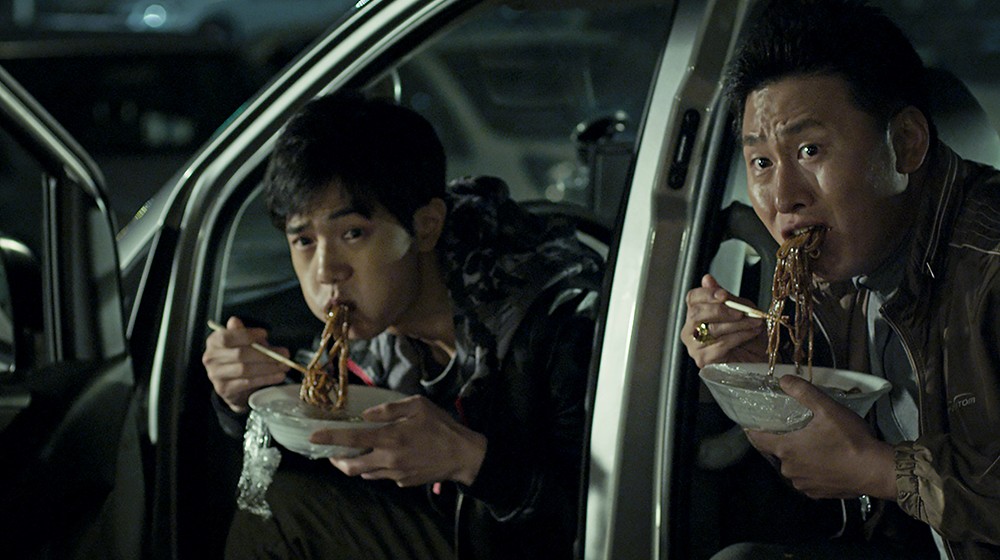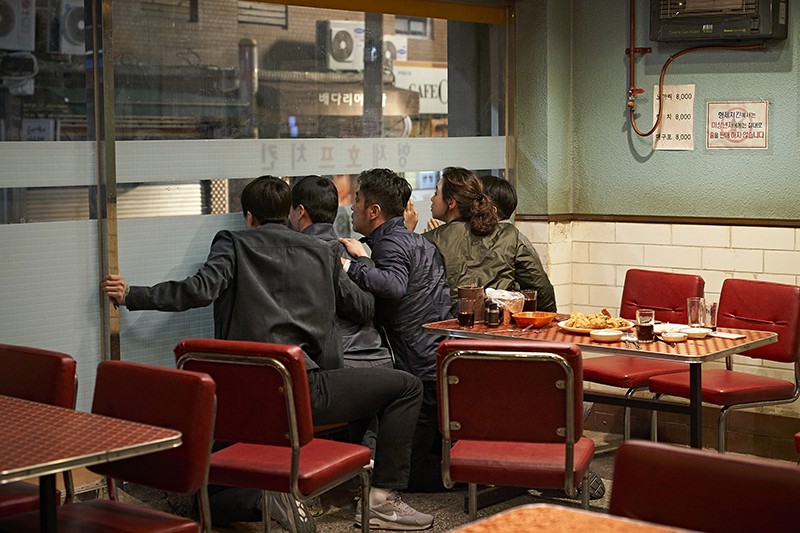한식 읽기 좋은 날
Vol 53. Korean Food from the Oceans and Rivers
Eating on the Job: Police “Mukbang” in K-content
HANSIK in Media Content
Korean media content now features an increasingly diverse array of food, including yashik (nighttime snacks) and convenience store food. A lot of such content involves police officers eating while on stakeout in a patrol car or at the precinct. Let’s take a look at the foods eaten by Korean law enforcement personnel in movies and dramas.
Article Cha Yeji (Editorial Team)

Still from Veteran / Source: Naver Movies
Jajangmyeon
Jajangmyeon, or noodles served with black bean sauce, is a simple meal that can be ordered for delivery from virtually anywhere in Korea. There are many scenes in TV dramas and movies of people eating delivered jajangmyeon when there is little time for a regular meal. A police officer who was eating a bowl of jajangmyeon while on stakeout but, realizing that the culprit is getting away, quickly puts down the jajangmyeon to chase down the criminal has now become an oft-used cliché in police dramas. The reason that jajangmyeon is used in this way is because it is an all-in-one meal that is especially convenient for police officers, who are never in one place and often have to eat wherever they happen to be.
Served with a sauce made from black beans, vegetables, and meat, jajangmyeon was purportedly introduced to Korea by the Chinese. It is regarded, nevertheless, as a Korean food and not a Chinese one because its format was invented in Korea for Korean consumers. Over the centuries, the dish has changed so much that it has lost many of its original features. The original version seemed to have had a thicker sauce and was served with vegetables to be mixed in separately, while today’s version has a much more watery sauce and is stir-fried with the vegetables at the same time as the sauce.

Source: YouTube channel of JTBC Lecture
Gukbap (rice and soup)
Gukbap appears in TV dramas and movies almost as frequently as jajangmyeon. A suspect, while undergoing questioning at a police station, is usually given seolleongtang (ox bone soup) as a meal. A suspect eating such delivered food is a very familiar scene. Soup served with rice appears not only on TV but also police-related YouTube broadcasts.
As its name suggests, gukbap is made by putting a bowl of rice into a bowl of soup so that they can be eaten simultaneously. It is a dish that allows for immense variety depending on the ingredients and how they are cooked. Haejangguk (hangover soup), seolleongtang, kongnamulgukbap (bean sprout soup and rice), and sundaegukbap (blood sausage and rice soup) are all beloved Korean foods. The biggest advantage of gukbap is that it is easy to eat, because everything is in one bowl, and quite filling as well.

Still from Extreme Job / Source: Naver Movies

Fried chicken
The movie Extreme Job features one dish: fried chicken. It centers on a team of police officers who open a fried chicken restaurant that serves as a front for their undercover investigation. Due to the unexpected popularity of their galbi-flavored fried chicken, they end up operating as a restaurant by day and doing actual police work by night.
A survey of residents of the world’s major cities revealed that fried chicken was the dish most often referred to as “Korean food.” The popularity of Korean-style fried chicken has grown over the years to the extent that it now stands shoulder to shoulder with other “authentic” Korean foods. It can even be said to have established a new category: yangnyeom (seasoned) fried chicken. This sweet-and-tangy variation on fried chicken soon led to the birth of more flavors, such as soy sauce, garlic, and scallion. The fried chicken served by the police officers in Extreme Job is seasoned with a soy sauce base, which emphasizes the “Koreanization” of fried chicken.










